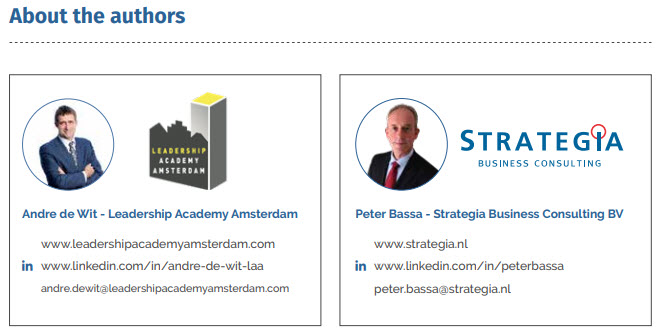Choosing a strategy process that leads to success
Introduction
It is a well-known ritual that as summer approaches, companies prepare their annual plan and budget cycle for the coming year. Timetables are sent to local managements in their home country and abroad to report according to corporate guidelines. Management teams are given strict deadlines for their plans and budgets. Reporting takes place based on a uniform format in order to enable the head office to consolidate all the information into the management system.
A time-consuming process, that demands a lot of time and resources from Operations and from HQ. Despite its importance, this approach should be questioned, as plans developed today are more often than not outdated tomorrow.
Research* from Brightline Initiative and the Economist Intelligence Unit shows that only 10% of organizations are effectively achieving their strategic goals.
Strategy Planning: An annual headache or a valuable process?
Since the 1960s, strategic visions and methods have been developed at a rapid pace to help shape businesses. From tools such as the BCG matrix, the inevitable SWOT analysis and the 3Cs, 5Ps and 7Ss, to more recent frameworks such as Blue Ocean strategies and Business Model Innovation. If you do not work Agile today, you have missed something important. Strategy methods turn into hypes and look like a panacea to explain the world. Changes occur more rapidly and the scale of disruptions and crises is increasing. The ‘one size fits all approach’ that we described in our previous article does not work anymore. What does this mean for your strategy process and for leadership to become successful?
A strategy process is maintained that does not fit with the business environment in which the company operates, and which divides HQ and Operation, will inevitably lead to disappointment. Questions asked upfront like: “what kind of a strategy process do we really need in our company?” will help to make a sound decision how to start with a process that will deliver results.
Bridging the gap between strategy design and execution
Despite the array of methods that are available, the strategy process itself varies little in many companies. Executive leadership, in cooperation with the marketing & strategy department, design the overall vision for the future of the company and the detailed goals for next year. They expect from their local businesses to detail this framework for their respective business. The plans made are monitored and followed up in the monthly budget meetings.
Strategy design and execution are disconnected.
It is not without reason that 59% of top managers say that their organizations have difficulty implementing their strategy successfully and to bridge the design–implementation gap.
Working with a unifying framework: the BCG Strategy Palette*
As a basis for our articles, we follow the extensive research BCG has executed and the framework they have developed: The Strategy Palette*. We will look at two dimensions that guide the strategy process approach.
- Companies and market sectors that have to deal with the unpredictability and malleability of their business environment. For example, the oil industry works with long planning horizons, is active in mature markets and have little influence on their environment due to regulations, established competition and high entry levels.
- Companies that are successful in the platform economy such as Über, AirBnB and Facebook. These companies aim to develop an ecosystem to create and orchestrate their own market. Flexibility and experimentation are very important for these companies, with a corresponding company culture and style of leadership. Read for a more detailed description of the Strategy Palette our 2nd article or visit the BCG website3.
These are incomparable circumstances. Carrying out the same strategy process in these extremes is doomed to fail. This demands that senior leadership deliberately choose a certain style of strategizing. Firstly, an approach that matches the company’s environment and secondly a process that bridges the gap between strategy design and implementation
Deploying multiple strategy approaches
Although many companies will only use one strategy process, it will probably be necessary to apply different approaches across the company. This might be due to variances in the characteristics of markets in which the company operates, differences in maturity of geographies between, for example, Western Europe and Africa, or because they have a portfolio
of products that vary from ‘stars’ to ‘cash cows’. All of these examples require different approaches for the strategy process and different styles of leadership to make each of the processes a success.
“Carrying out the same strategy process in these extremes is doomed to fail.”
What it means for culture and leadership
In the following articles we will explain which organizational culture and leadership best supports each of the four strategies. Culture is about the fundamental assumptions of what is to be a person and how you should interact within your own group and with outsiders. Apart from taking a look at the required organizational culture, strategy and leadership will also be aligned. The leader is the person in the group that possesses the combination of personality and leadership skills that makes others want to follow his or her direction. Based on interviews and literature study we will describe a suitable culture and style of leadership for each of the four strategy approaches.
Notes:
- Why good strategies fail: lessons for the C-suite, an Economist Intelligence Unit and Brighline Initiative report, 2013
- Your strategy process needs a strategy, a BCG Henderson Institute study, 2018
- https://www.bcg.com/publications/collections/your-strategy-needs-strategy/intro.aspx


